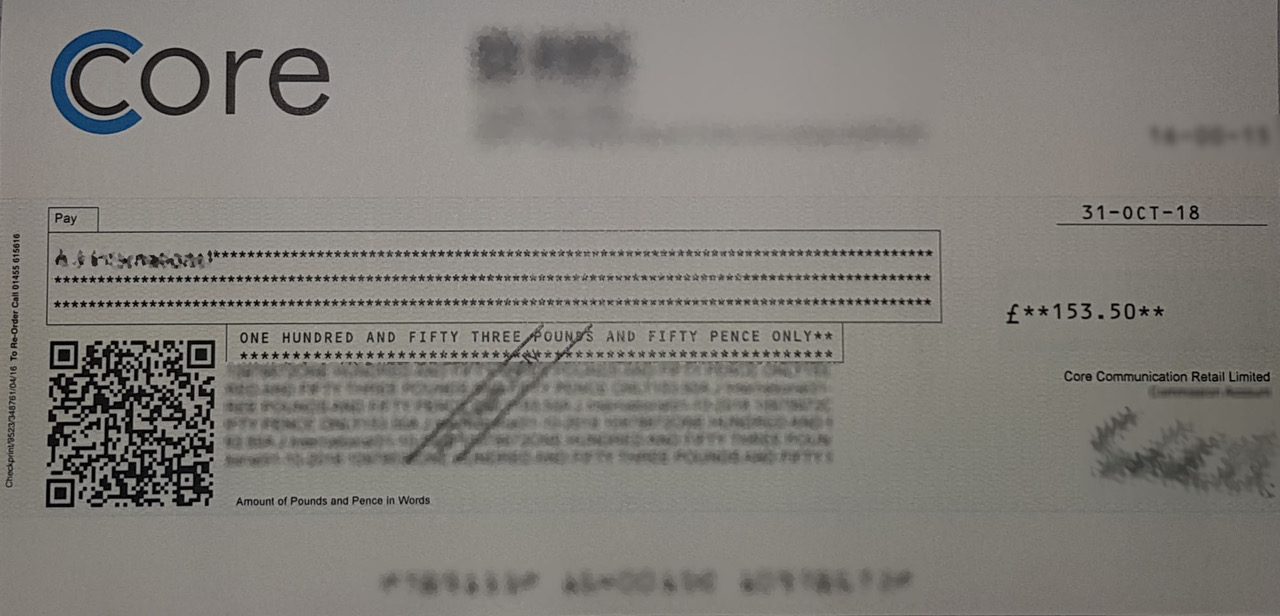Fighting Cheque Fraud in the 21st Century
Cheque volumes are reducing by around 14% per annum but cheques remain an important and indeed essential payment method for various segments of society

More than one million cheques are issued every day in the UK.
We are currently in the midst of the UK banking industry’s commitment to digitise the paper cheque with the roll-out of the Cheque Imaging Clearing System (ICS), thereby reducing clearing times to the next working day following the cheque being banked on Day 1. New methods for paying cheques into your bank account are being introduced, such as capture on your smartphone and remote deposit for businesses using desktop cheque scanners. Subsequently, there is a faster clearing period with value credited and certainty of fate known by the end of Day 2, whilst you are now no longer required to visit your bank or pay in at your local Post Office. The cheque is now finally coming into the 21st century technology revolution.
Decline in Cheque Fraud
Identification of fraud on a paper instrument has been developed and refined over the years with greater use of technology, and bank staff checking for fraud have honed their skills in identifying fraud – counterfeit, forgery and fraudulently altered. The Cheque Printer Accreditation Scheme (CPAS) has also played an important role since its inception in the mid-90s in ensuring that cheque printing production meets strict standards and regulations, the design and ink coverage enables good quality images when captured, and all paper meets minimum fraud prevention requirements.
Fraud – The Figures
Cheque fraud is at its lowest level ever and currently stands at 1.33% of overall payment fraud, as reported by the UK Finance Fraud the Facts 2017 Publication. Cheque usage is currently the safest payment method (notwithstanding coin and paper cash usage).
The Challenges with Imaging
Once the front and back of the cheque has been imaged in readiness for submission into the Image Clearing System it becomes the legal payment instrument and the original paper cheque then has no value.
The ICS automatically undertakes a validation check for file size that includes the images and data. If this validation check fails then the file is rejected, and it is for the collecting bank to correct and represent their submission. An Image Quality Analysis (IQA) check on both the front and rear images of each cheque against the ICS Image Standards is also undertaken following successful validation. The paying bank is advised for each item whether IQA has failed or passed and it is then for that bank to accept or reject the image.
The paying bank has to be able to read the images - should the paying bank be unable to read the image then the cheque will not be paid with the need for the beneficiary bank to liaise with the collecting bank (usually the same bank) to recapture the image from the original paper and to represent both the front and rear images together with new data. As the cheque has not been paid due to the poor image capture then there is an unwanted and unwelcome delay for the beneficiary to be credited with the funds.
If the collecting bank chooses not to undertake IQA at capture, they do so at their risk that submitted images may be flagged as non-compliant and unusable with potential reputational damage to both the Scheme and that bank.
With a faster clearing timescale cheque fraud detection has, by necessity, got to become more agile and it is essential for all banks involved in the transaction to diligently undertake their checks to combat fraud.
Normally, the customer will pay cheques into their account at their own bank and hence that bank has to assume duties as both the collecting and beneficiary banks.
The collecting bank has to undertake some legal obligations in their checking process e.g. the payee name is identical to the account name to be credited.
The collecting bank has the only opportunity in the Image Clearing System to check the security features on the paper cheque.
As the paper cheque is retained by the collecting bank or beneficiary customer at the point of deposit then it is essential for the beneficiary bank to “know their customer” - is the amount to be credited and frequency the norm?
Where the beneficiary bank is not the same as the collecting bank then the ICS can send the beneficiary bank an early notification message providing details of the item being processed and thereby enabling them to be aware and to commence their checks.
When the paying bank receives the image of the cheque then “know your customer” and account profiling are paramount.
The central Image Clearing System automatically checks for the presentation of duplicate items and issues a warning message to the paying bank to check the item and their data records.
Image Survivable Features
The addition of Image Survivable Features onto the face of the cheque can greatly help with fraud prevention and ‘ISFs’ are becoming more readily available and prevalent.
Future Development
As payments become near real-time then real-time data analysis is essential to create a rich and varied database to achieve fraud detection and to further strengthen the fight against fraud.
CONTACT
Lynton Buxton
TALL Security Print Ltd
enquiries@tallgroup.co.uk
www.tallgroup.co.uk
+44 1928 579200



